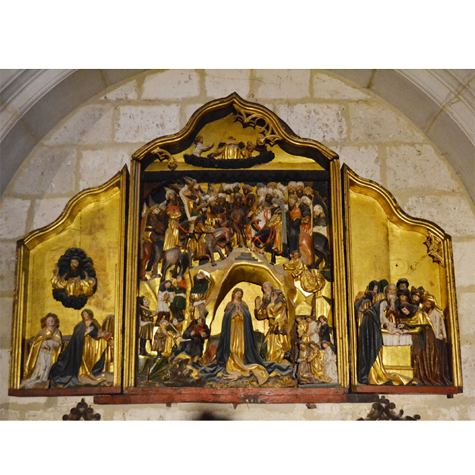Catalogue
ALTARPIECE OF THE INFANCY OF CHRIST
TYPOLOGY
The structure of the Santibáñez-Zarzaguda altarpiece is most unusual, not because it is a triptych, but because of the relationship and proportion between the central section of the altarpiece and the hinged wings that also protect the cornice which, when closed, give the closed altarpiece a perfectly rectangular shape.
This rather unusual typology of examples of altarpieces manufactured in Flemish workshops might well be justified by the very early chronology attributed to this particular work, the type of which has very few examples conserved today. The wave shaped frame topped with an ogee arch is also particularly exceptional. It was this, in fact, that led researcher R. Didier to think that the frame might have been added when some later alteration work was carried out , a question that can only be resolved by carrying out an exhaustive technical examination. The centre body and right wing of the altarpiece conserve fragments of traceries linked to the altarpiece of the Passion in Dortmund.

